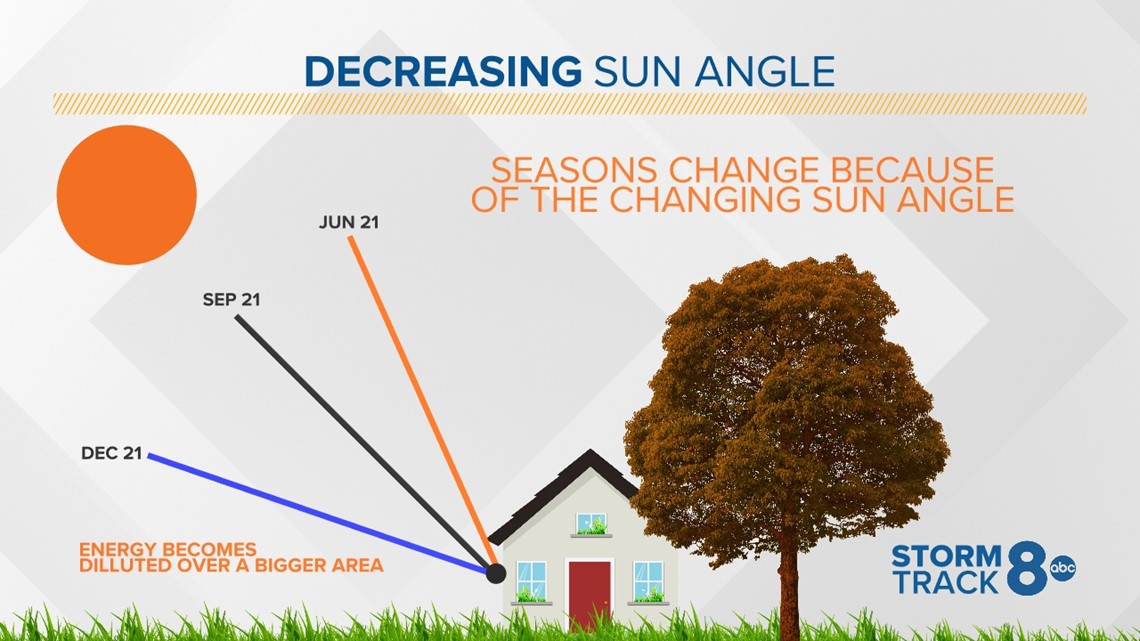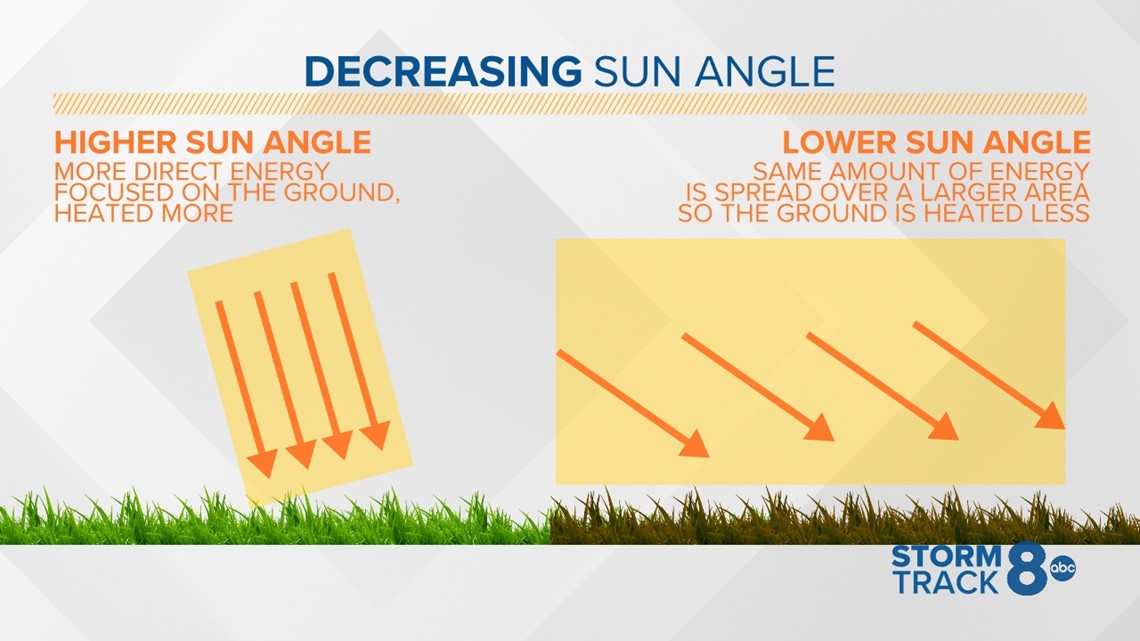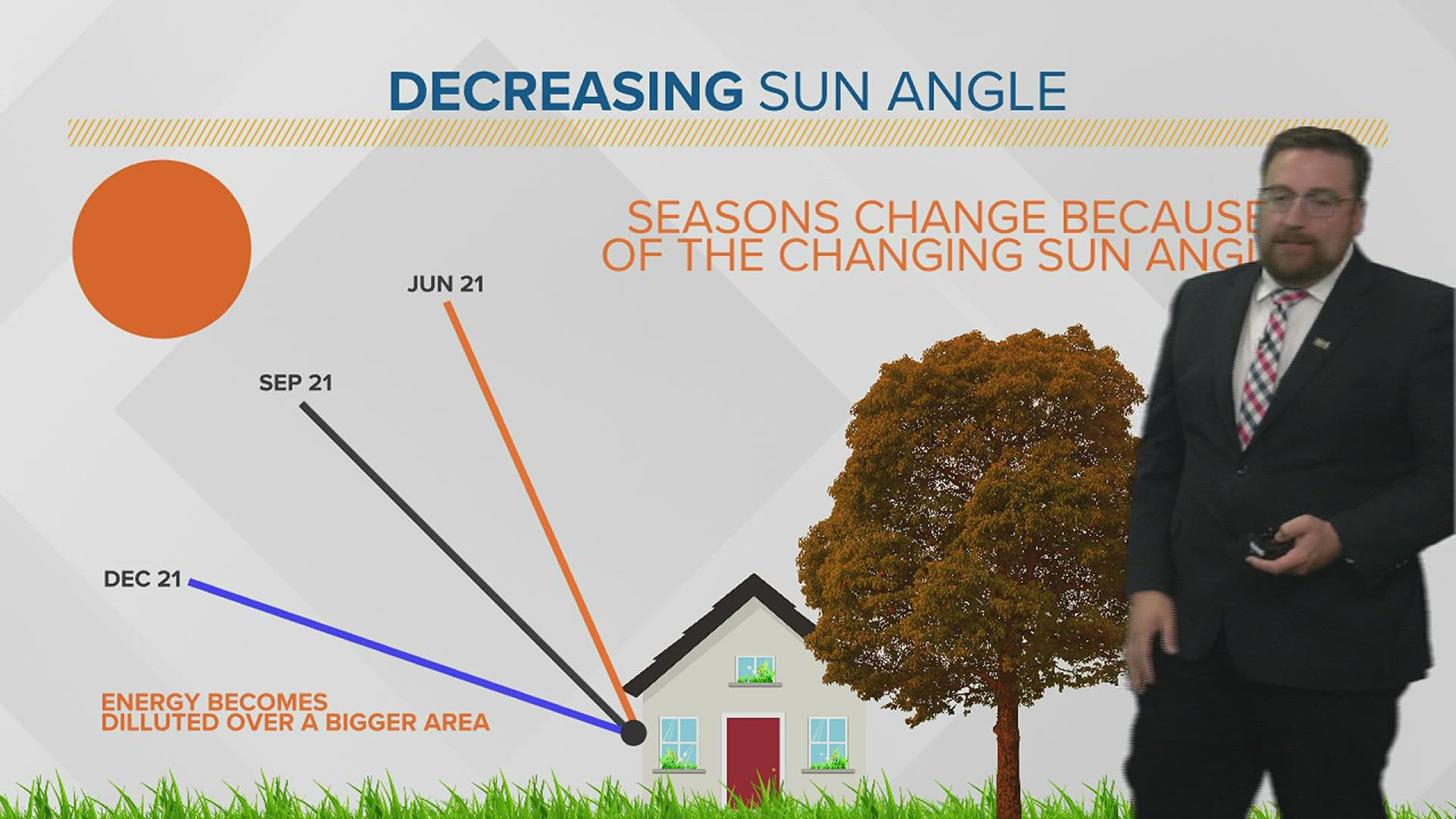MOLINE, Ill. — Fall is quickly approaching as we near the beginning of September. That means many things, including shorter lengths of daylight each day, earlier sunsets, and later sunrises.
It also means the angle of the sun will undergo a rapid transformation for the remainder of the year, too up until the winter solstice on Dec. 21. So, what does the angle of the sun have to do with this? If the sun always rises each day, wouldn't we see some warmth regardless?
Not exactly, and here's why.
Earth is tilted on its axis, with that tilt ranging from 22 to 24.5 degrees depending on the time of year. The Earth also has an elliptical orbit around the sun. We often talk about the Perihelion, in January, when the Earth is closest to the sun, while in July, the Aphelion denotes Earth's farthest distance from the sun.
It's not the distance that is important, though. If it was, the entire planet would be very warm during the winter months and much cooler during the summer months. In reality, it all comes down to the sun's angle.


During the spring and summer seasons here in the Quad Cities, the sun angle reaches its highest point on the summer solstice, June 21. This angle is then greatly reduced in the fall and winter months reaching its lowest point on the winter solstice, Dec. 21.


The reason the angle is so important relates to the distribution of the sun's energy. A higher sun angle in the sky equates to more direct energy being received here at ground level. The lower the sun angle, the less direct energy we receive here at the ground level. More of that energy is lost in traveling through a wider space, leaving less energy behind to eventually reach the ground.
The easiest way to experience this is to recall what happens during the winter months with the inside of your vehicle. On a sunny day in January, your car won't feel very warm on the inside after it's been sitting out for a while.
However, come late February into March, you'll be able to leave your car out in the sun during the day and notice that the inside is already nice and warm, not requiring any additional heat from your car's HVAC system. That's because the inside of your car is receiving more direct energy from the sun in late February and March versus in January. Science!
Have a question you would like me to answer for an upcoming Ask Andrew segment? Submit it, here!
Watch more Ask Andrew segments on News 8's YouTube channel

